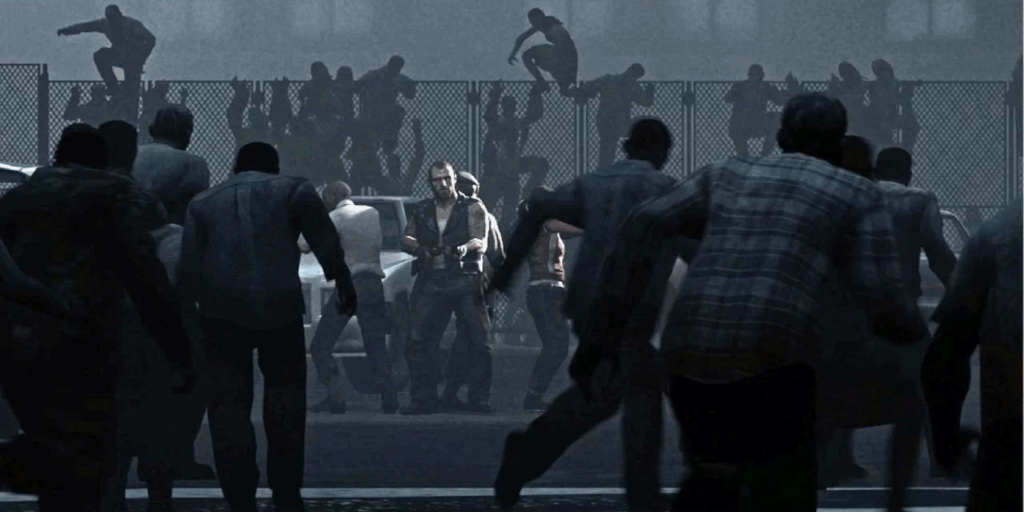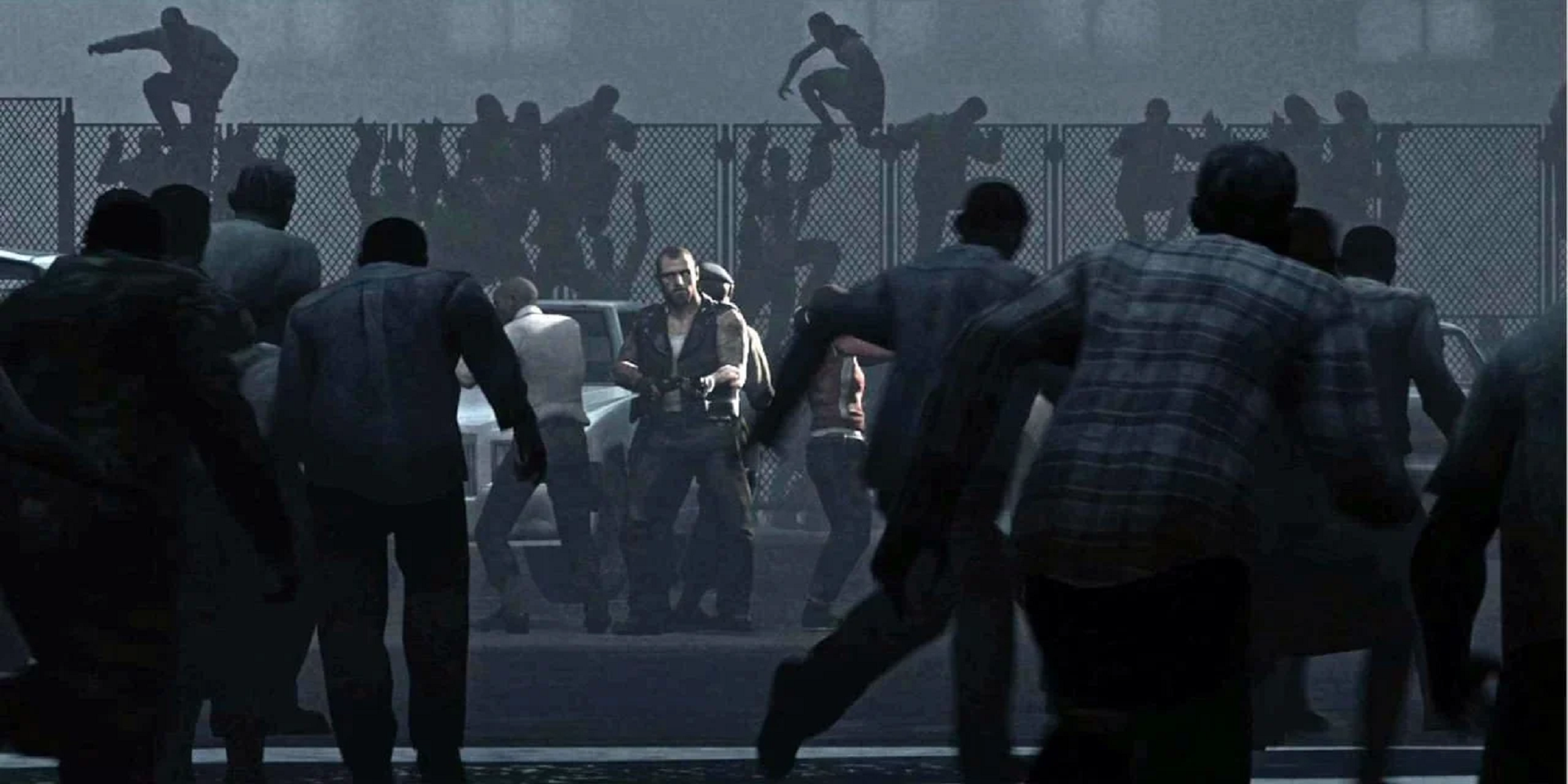
Surviving the Onslaught: Understanding the Left 4 Dead Horde
The Left 4 Dead series, renowned for its cooperative gameplay and intense zombie action, hinges on a core mechanic: the horde. This relentless wave of infected is the primary challenge players face, demanding teamwork, strategic thinking, and quick reflexes. Understanding the Left 4 Dead horde is crucial for survival in this unforgiving world. This article delves deep into the mechanics, behavior, and strategies for dealing with the horde, providing both newcomers and seasoned veterans with valuable insights.
What is the Left 4 Dead Horde?
The horde in Left 4 Dead is a massive wave of common infected, triggered by various events or the AI Director. Unlike other zombie games where zombies trickle in, the Left 4 Dead horde descends upon the players in a sudden and overwhelming force. These infected are relatively weak individually, but their sheer numbers pose a significant threat. The horde is not just a random occurrence; it’s a dynamically generated event designed to test the players’ coordination and resource management.
Types of Hordes
While the core concept remains the same, hordes can manifest in different forms:
- Natural Hordes: These are triggered by the AI Director, who monitors the players’ progress and adjusts the difficulty accordingly. The Director considers factors like player health, ammunition levels, and overall performance to determine when and where to unleash the horde.
- Alarm Hordes: These are triggered by specific in-game events, such as tripping a car alarm, disturbing a flock of crows, or alerting a Witch. Alarm hordes are often more predictable and can be anticipated, allowing players to prepare.
- Finale Hordes: These are the most intense and prolonged hordes, occurring during the finale of each campaign. Finale hordes often require players to defend a specific location while completing a task, such as refueling a generator or waiting for rescue.
Understanding Horde Mechanics
The Left 4 Dead horde isn’t just a mindless swarm. It operates under a set of rules and mechanics that influence its behavior. Understanding these mechanics can significantly improve your chances of survival.
AI Director’s Role
The AI Director is the mastermind behind the horde. It dynamically adjusts the game’s difficulty based on the players’ performance. If the players are doing too well, the Director might increase the frequency or intensity of hordes. Conversely, if the players are struggling, the Director might ease up on the pressure. The Director also controls the types of special infected that spawn during a horde, adding another layer of challenge.
Horde Composition
A typical horde consists primarily of common infected. However, special infected can also spawn during a horde, adding a significant threat. Common special infected additions during a horde are: the Boomer, Hunter, Smoker, Tank, and Witch. The frequency and types of special infected depend on the difficulty level and the AI Director’s decisions.
Sound and Visual Cues
Left 4 Dead provides players with several audio and visual cues to indicate an impending horde. A distinct musical cue, often described as a rising tension, signals the arrival of the horde. Visually, the environment might darken, and the air might become filled with dust and debris. Paying attention to these cues can give players valuable time to prepare.
Strategies for Surviving the Left 4 Dead Horde
Surviving the Left 4 Dead horde requires a combination of teamwork, situational awareness, and effective combat tactics.
Teamwork and Communication
Teamwork is paramount in Left 4 Dead. Sticking together, communicating effectively, and coordinating your actions are essential for surviving the horde. Designate roles within the team, such as a front-line fighter, a medic, and a support player. Call out incoming threats, share resources, and revive fallen teammates promptly. Effective communication can mean the difference between life and death.
Choosing the Right Weapons
Selecting the appropriate weapons is crucial for dealing with the horde. Shotguns are excellent for close-quarters combat, providing a wide spread and high damage. Assault rifles offer a good balance of range and firepower, allowing you to engage enemies at medium distances. Melee weapons can be useful for conserving ammunition and pushing back hordes in tight spaces. Experiment with different weapons to find what works best for your play style and the situation.
Utilizing the Environment
The environment can be your greatest ally in Left 4 Dead. Funnel the horde into chokepoints, such as doorways or narrow corridors, to concentrate your firepower. Use explosive barrels and propane tanks to deal massive damage to groups of infected. Climb onto elevated platforms to gain a tactical advantage and provide cover for your teammates. Be aware of your surroundings and use them to your advantage.
Conserving Resources
Ammunition and health are precious resources in Left 4 Dead. Conserve your ammunition by using melee weapons when appropriate and avoiding unnecessary shots. Share health packs and pills with teammates who are injured. Scavenge for supplies whenever possible, but be cautious of triggering alarm hordes. Resource management is a key aspect of long-term survival.
Dealing with Special Infected During a Horde
Special infected pose a significant threat during a horde. Prioritize eliminating them quickly to prevent them from disrupting your team’s defenses. Communicate their locations to your teammates and coordinate your attacks. Use specialized weapons and tactics to counter each type of special infected. For example, a well-placed shot to the head can instantly kill a Hunter, while a Molotov cocktail can quickly dispatch a group of Smokers.
Advanced Horde Strategies
Once you’ve mastered the basics, you can explore more advanced strategies for dealing with the Left 4 Dead horde.
Kiting
Kiting involves leading the horde around the map while your teammates provide covering fire. This strategy can be useful for creating space, avoiding bottlenecks, and allowing your team to reposition. However, kiting requires excellent map knowledge and communication skills. If you’re not careful, you can easily lead the horde into your teammates or get trapped in a corner.
Choke Point Management
Mastering the art of choke point management is essential for surviving the horde. This involves strategically positioning your team at a narrow entrance or corridor and using your combined firepower to eliminate the infected as they approach. Coordinate your reload times, use melee weapons to push back the horde, and be prepared to fall back if necessary. Effective choke point management can turn a seemingly impossible situation into a manageable one. [See also: Left 4 Dead Weapon Tier List]
The Art of the Melee Push
The melee push is an often-overlooked but highly effective tactic for dealing with the horde. By repeatedly striking the infected with your melee weapon, you can push them back and create space for your team. This can be particularly useful in tight spaces or when you’re surrounded by enemies. Mastering the timing and range of the melee push is crucial for maximizing its effectiveness. Remember to communicate with your team when you’re using this tactic, as it can disrupt their aim and firing patterns.
The Enduring Appeal of the Left 4 Dead Horde
The Left 4 Dead horde remains a compelling and challenging game mechanic. Its dynamic nature, coupled with the need for teamwork and strategic thinking, has cemented its place in gaming history. Whether you’re a seasoned veteran or a newcomer to the series, understanding the horde is essential for survival. So gather your friends, load up your weapons, and prepare to face the onslaught. The horde awaits.
The unpredictable nature of the Left 4 Dead horde, driven by the AI Director, ensures that no two playthroughs are ever the same. This replayability is a major factor in the game’s lasting appeal. Players are constantly forced to adapt to new situations and challenges, keeping the gameplay fresh and engaging. The horde is more than just a wave of enemies; it’s a dynamic force that shapes the entire experience. It is the core of what makes Left 4 Dead a unique and memorable gaming experience.
Ultimately, the key to surviving the Left 4 Dead horde lies in understanding its mechanics, mastering effective strategies, and working together as a team. With the right combination of skill, communication, and resource management, you can overcome even the most overwhelming odds. So, embrace the challenge, prepare for the onslaught, and remember: teamwork makes the dream work. The horde is coming, are you ready?

